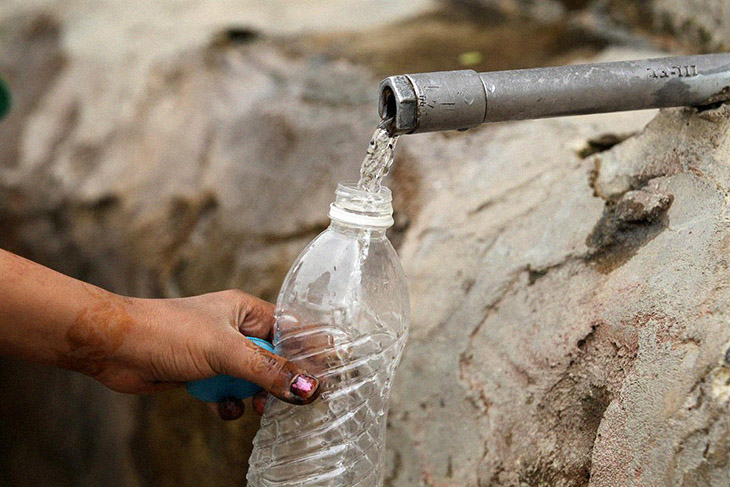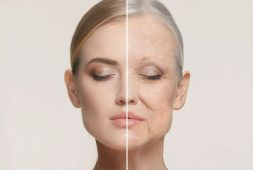
Water is vital to health. More importantly, it is the right of every person in this plant to have access to clean water and sanitation. No one is exempted from this rule. While many countries still need help when it comes to access to clean water, there has impressive progress in the recent years.
Those without access to clean water face greater threat to waterborne diseases. The sad part is that this issue isn’t present in low income countries only. People from wealthier nations such as the United States face the same issue.
On August 3, 2010, the General Assembly of the United Nations (UN) came together to state and recognize how access to clean water and sanitation is a basic human right. This runs alongside other fundamental rights, such as life and liberty, freedom of expression, and education. According to them, “Lack of access to safe, sufficient, and affordable water, sanitation, and hygiene facilities has a devastating effect on the health, dignity, and prosperity of billions of people and has significant consequences for the realization of other human rights.”
With progress comes growth, but there are also problems that come with it. Dirty water can now be found everywhere, and when left untreated, this water will contain pathogens such as the bacteria that causes diarrhea. In it are parasitic worms as well that cause schistosomiasis (snail fever).
The sad part is that these pathogens spread far and wide. The untreated human waste contaminates groundwater. This is the open water that people utilize for drinking, irrigation, bathing, and washing. The danger also comes when they wash their plates and utensils with this.
The good news is that there has been progress in terms of making everyone realize the universal right to clean water and sanitation. The World Health Organization (WHO) has made the estimate that between 2000 and 2017, a good proportion of the population worldwide have gained access to safely managed drinking water. This benefit has increased from 61 percent to 71 percent. In the same time frame, the proportion of the global population with access to safely managed sanitation services has gone up from 28 percent to 45 percent.
While the progress and improvements do sound impressive, the problem remains real and stark to many. Dirty drinking water and contaminated soil still threaten the health of huge numbers of people from all four corners of the globe. For instance, the Centers for Disease Control and Prevention (CDC) have conducted a survey and found that among children under five years of age, around 1.7 billion cases of diarrhea and 446,000 deaths have been found, and the culprit behind all these is unhealthy water. The experts from CDC also found that there are around 3 million cases of cholera, a waterborne infection, and 95,000 deaths from it on a yearly basis.
Dirty, poorly sanitated water is still very much a threat. The parasitic worms found in contaminated soil have infected hundreds of millions of people worldwide. Around 785 million people, which is tantamount to around 1 in 10 people worldwide, still don’t have access to drinking water facilities.
Water Poverty Found in Rich Nations
A surprisingly large number of those who have fallen victims of waterborne diseases live in rich nations. In fact, studies have been made and one in particular found that between 2013 and 2017, around 1.1 million people in the US don’t have access to clean water. Almost a half of these people lived in 50 of the largest metropolitan areas. Included in the list are the 65,000 residents of New York who did not have access to piped water.
The researchers at the University of Arizona in Tucson and King’s College London in the United Kingdom conducted the said study. The details of which are found in the journal Proceedings of the National Academy of Sciences in 2020. In the paper, the authors of the study state, “Without tap water, how do you wash your hands? In a global health pandemic such as Covid-19, the difference between secure and insecure water access – starting with those 65,000 unplumbed New Yorkers – is a matter of life and death.”
The study found that households without running water were more likely common in people of color, those who lived in mobile homes or rented accommodation, and those who spent a higher proportion of their income on housing costs. The authors claimed, “We offer clear evidence that gaps in urban water access are neither random nor accidental but underpinned by precarious housing conditions and systemic social and racialized inequality.”
The authors of the study suggest that their numbers almost certainly underestimate the scale of the problem at hand. That’s because the U.S. Census Bureau tends to undercount those in rented accommodation, those without homes of their own, and those of color. They have pointed out, for instance, that homeless folks oftentimes find it hard to access clean water and toilet facilities. The worst part is that their numbers are currently increasing in the different US cities.
Homelessness and Poor Housing
Another study has also been conducted and it confirmed that, although access to water and sanitation is supposedly available all across the US towns and cities, official figures do not include people without homes or those who live in substandard housing.
When the researchers took the other factors into account, they found that a staggering number of at least 630,000 people did not have access to a flush toilet. There are also around 300,000 who relied on shared sanitation.
The experts and scientists at the Georgia Institute of Technology in Atlanta oversaw the conduction of this study. Their report is in the American Journal of Public Health in 2020. Although the percentage of people without basic sanitation services should be low, the study authors write, the absolute number is still large for “a high income country where resources exist to address the issue.”
The scientists also note that people living in rented accommodation may have access running water and a flush toilet. However, when these facilities break, landlords don’t act on arranging repairs immediately. In fact, it takes weeks or months for many.
Therefore, the above studies conclude that the most effective way to solve this issue is to introduce measures that help ensure affordable and adequate housing effectively. This applies to all the towns and cities across the US.
The Hidden Water Crisis in the US
In 2019, the US Water Alliance and Dig Deep , two nonprofit organizations created a major report in which they proposed a plan of action to tackle the issue that they dubbed as “America’s hidden water crisis.” The report is called Closing the Water Gap in the United States. In it, they estimate that more than 2 million people have no access to safe drinking water and sanitation.
However, they once again reiterate that the country does not collect comprehensive data on the problem. Because of the lack of data, they found it difficult to assess the scale of the problem. They know that those who are most affected are people who come from low income communities and communities of color.
The report points out evidence that Native American households, for example, are 19 times more likely than white households to have inadequate plumbing. Moreover, African American and Latin households are nearly twice as likely to face the same challenges as white households. The authors assert that the problem is not unique only to the off the grid dwellings but to entire communities that don’t have clean water and safe sanitation.
They provide further proof by making examples from six communities, from California to Puerto Rico, to highlight how widespread the issue has become. The authors wrote, “On the Navajo Nation in the Southwest, families drive for hours to haul barrels of water to meet their basic needs. In West Virginia, they drink from polluted streams. In Alabama, parents warn their children not to play outside because their yards are flooded with sewage. Families living in Texas border towns worry because there is no running water to fight fires.”
The report conducted has come up with sad conclusions that revolve more commonly around rural communities. There is a stark contrast with towns and cities. The root cause of water poverty in these rural areas is because they are isolated from municipal water services. As opposed to urban areas where utility providers oftentimes cover the installation and maintenance costs of water and sewer lines. Unfortunately, for communities that are found far from these municipal systems, individual households are responsible for themselves. They need to worry about installing a private well and septic system without the technical and financial support they need.
Proposed Solutions
The experts have come up with proposed solutions to address the problem. The authors say that there should be community-led initiatives that involve the active participation of residents. When this is made meaningful, the initiative is most likely to succeed. That’s because everyone will understand the value of collaboration among neighbors. It will also give them a sense of ownership. The authors also call for additional government grants, as well as operational and technical assistance that are required.
On March 31, 2021, President Joe Biden published a program of infrastructure investment. This is called the “American Jobs Plan” that includes $111 billion worth of investments in terms of water infrastructure. The plan has ambitions plans in terms of the modernization of aging drinking water and wastewater systems. It will be successful by scaling up existing successful programs. The plan also includes $56 billion worth in grants and loans to “states, tribes, territories, and disadvantaged communities.”
Medical News Today asked George McGraw, the chief executive officer of Dig Deep, how optimistic he is in terms of the new investments that would address the concerns raised in the Dig Deep and US Water Alliance report. He shared, “Given the scope of the problem with more than 2,200,000 Americans living without basic access to safe drinking water and sanitation, it is impossible that the problem will be solved overnight.” Still, he was also encouraged by the investments that Congress and the Biden Administration were making. Tackling the problems may not happen immediately, but with consistency, it will get there.
McGraw added that the “number one thing” that Congress and the Administration can do in helping marginalized communities will significantly increase the level of annual federal funding that is targeted at tribes and other affected communities. However, he emphasized that the money to serve as funds should be made as grants rather than loans. Furthermore, local government, utilities, nonprofits, and community groups should have access to the money as well as they see fit. He shared that “for things like decentralized systems or operations and maintenance costs in places that systems cannot financially support themselves.”
Digging Deeper
As the experts look into what’s to come, many of those affected are going to have to literally dig deeper. A study led by the US Forest Service has made a prediction and said that by the end of the 21st century, climate change and population growth will present further problems in the water supply in many regions. The authors also say that the declines in rainfall, will rule out any hope when it comes to increasing reservoir storage capacity.
There are only few remaining options left to help them cope with severe shortages. In order to increase groundwater extraction, they need to dig deeper wells and pump more water out of rivers. This will entail costs. The government has to dig in the pockets deeper and also take note of the environmental impact that this will involve.
While the problem isn’t concentrated in the US alone, the rest of the world can expect the same issues. Everyone will face the challenges that stem from warming climates and increasing populations.
In the coming decades, the human right to water and sanitation may be a distant dream if nothing is done. This is a hard truth to swallow, especially for those living in socially and economically hard-up societies.



